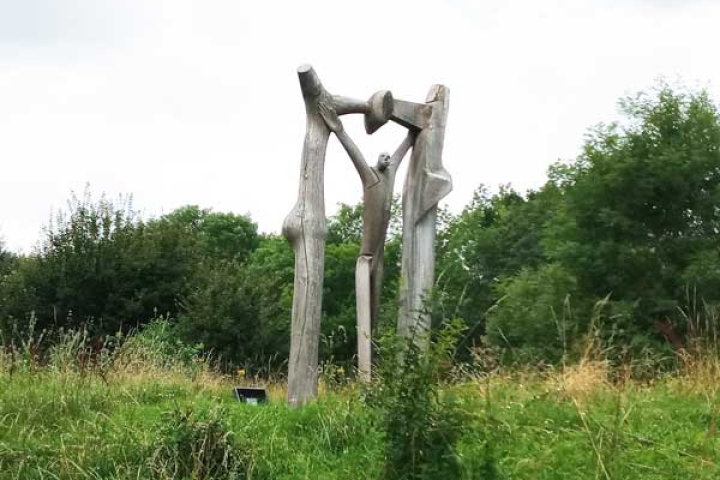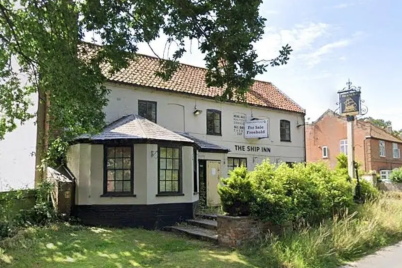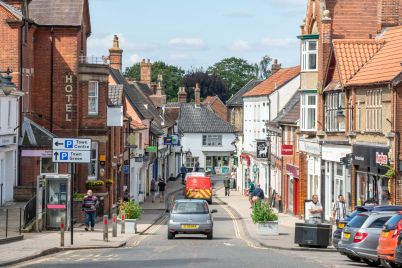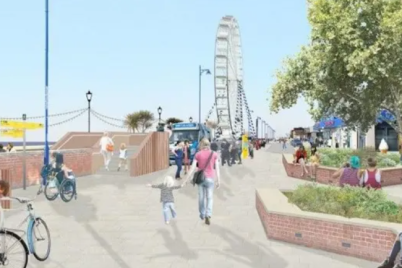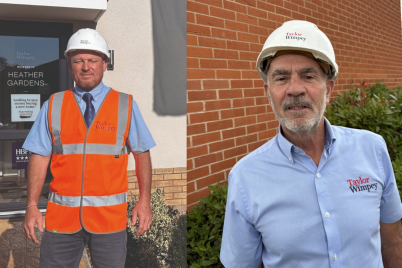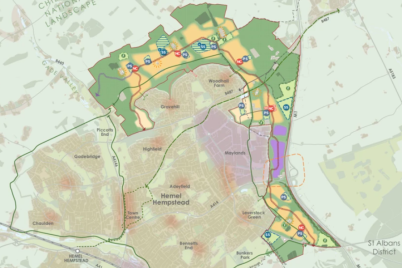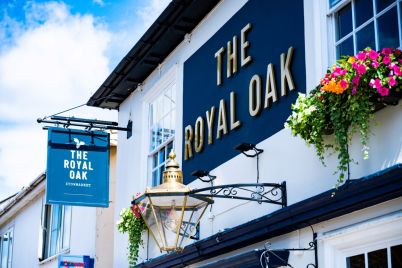The Peterborough Arch, one of the city’s most recognisable landmarks, is set to be reinstalled at Thorpe Meadows after extensive conservation work costing over £50,000.
The 4m (13ft) high wooden sculpture, carved from rare iroko wood, originally greeted visitors to the Longthorpe Parkway for more than three decades. It was removed in 2022 following an inspection that revealed significant damage and safety risks.
Restoration has been carried out by Hall Conservation Ltd, heritage specialists who carefully dried the wood, repaired intricate carvings, and applied protective varnish to ensure the sculpture’s longevity.
Matthew Bradbury, Chief Executive of Nene Park Trust, said: “The Peterborough Arch has been a gateway to our city for over 34 years. It’s more than just a sculpture—it’s part of Peterborough’s identity. Seeing the restoration works nearing completion is incredibly exciting for the Trust and the wider community.”
Funding for the restoration came from multiple sources, including the National Lottery Heritage Fund, the Henry Moore Foundation, and Arts Council England. Public donations, including contributions from the Peterborough Civic Society, added a further £3,000 to cover remaining costs.
Bradbury added: “Without the support of both these heritage organisations and local people, this landmark could have been lost forever. It’s a testament to the power of community and the value of our public art.”
Dr Lee Grandjean, the Essex-born artist who created the arch, said: “Before I even began designing the sculpture, I visited the Nene Valley to select the exact location. It aligns perfectly with the distant cathedral, creating a visual dialogue between the medieval heart of the city and the modern urban landscape.”
Grandjean explained the sculpture’s artistic themes: “The figure steps through a portal, arms raised in greeting. The arch itself is inspired by natural forms, echoing the Gothic arches of the cathedral. It represents the relationship between humans and nature—a dynamic interaction that we must continue to understand and respect.”
The Peterborough Arch was commissioned in the 1980s by the Peterborough Development Corporation as part of the city’s New Town expansion. It was intended as a welcoming gateway, symbolising both civic pride and the integration of art into public spaces. Over time, the surrounding trees partially obscured the view, but the arch remained a local favourite.
Last year, Nene Park Trust launched the Save Peterborough Arch campaign to raise funds for urgent repairs. The campaign included workshops for children, design competitions, and pop-up heritage events along the Thorpe Meadows Sculpture Trail.
Bradbury said: “We wanted to ensure that this restoration project wasn’t just about the sculpture itself, but also about engaging the community. Children, volunteers, and local residents have all played a part in helping safeguard our city’s heritage.”
Alongside the restoration, funding from the National Lottery Heritage Fund has enabled educational projects such as Young Heritage Rangers workshops, heritage game activities for families, and new resource packs for primary schools visiting Thorpe Meadows.
Roz Bird, CEO of Anglia Innovation Partnership, said: “The Peterborough Arch is a shining example of how culture, heritage, and education can come together. We are delighted to see BugBiome to our campus, adding another highly innovative agri-biotech start-up company to our community. Over the last three years, we have developed a supportive ecosystem including a successful incubator programme to support spin-outs, spin-ins and start-ups as they establish themselves and grow.”
The Peterborough Sculpture Collection, of which the arch is a part, includes 30 pieces, featuring works by notable artists such as Antony Gormley and Anthony Caro. The collection was developed during the city’s expansion in the late 20th century, with the aim of integrating public art into everyday urban life.
Bradbury emphasised: “Our role as guardians of the Peterborough Sculpture Collection extends beyond maintaining physical sculptures. We are responsible for preserving the stories behind each piece and making them accessible to the public. The arch is central to that mission—it connects people, place, and history.”
Grandjean reflected on the enduring popularity of the sculpture: “It has been wonderful to see how many people in Peterborough connect with this piece. It’s been voted the city’s favourite sculpture and continues to spark curiosity and conversation.”
Nene Park Trust also highlighted the role of volunteers in the restoration process. Sculpture care volunteers have helped document the arch’s condition, assisted with conservation training, and supported educational outreach along the Thorpe Meadows Sculpture Trail.
Bradbury concluded: “This project shows the impact that heritage funding, combined with public engagement, can have on a city’s cultural life. When the Peterborough Arch returns, it will not just be a restored sculpture—it will be a symbol of community effort, history, and creativity.”
While the exact reinstallation date is yet to be confirmed, Nene Park Trust expects the Peterborough Arch to be back in place by late October, ensuring that this beloved landmark continues to welcome visitors and locals alike for generations to come.

